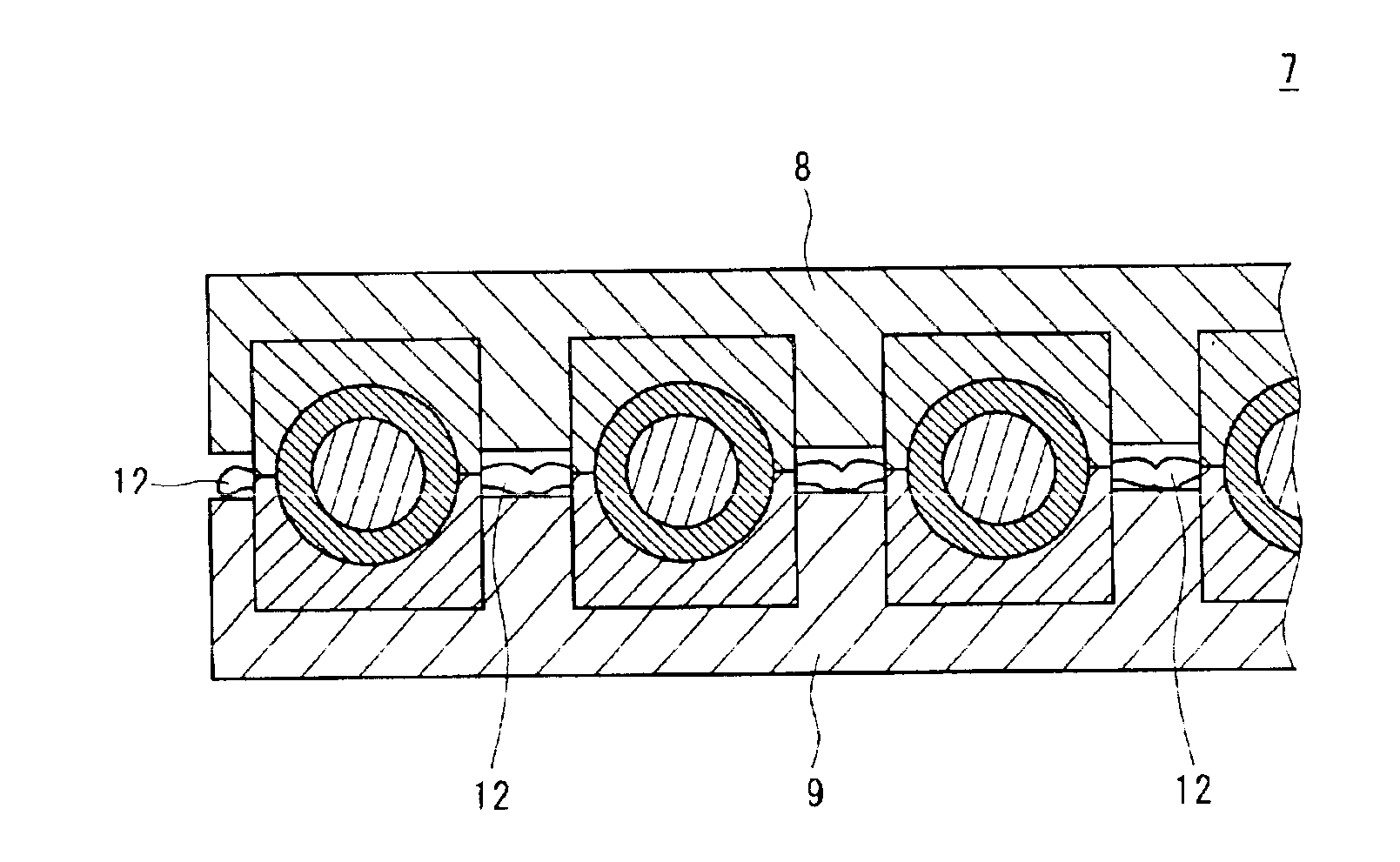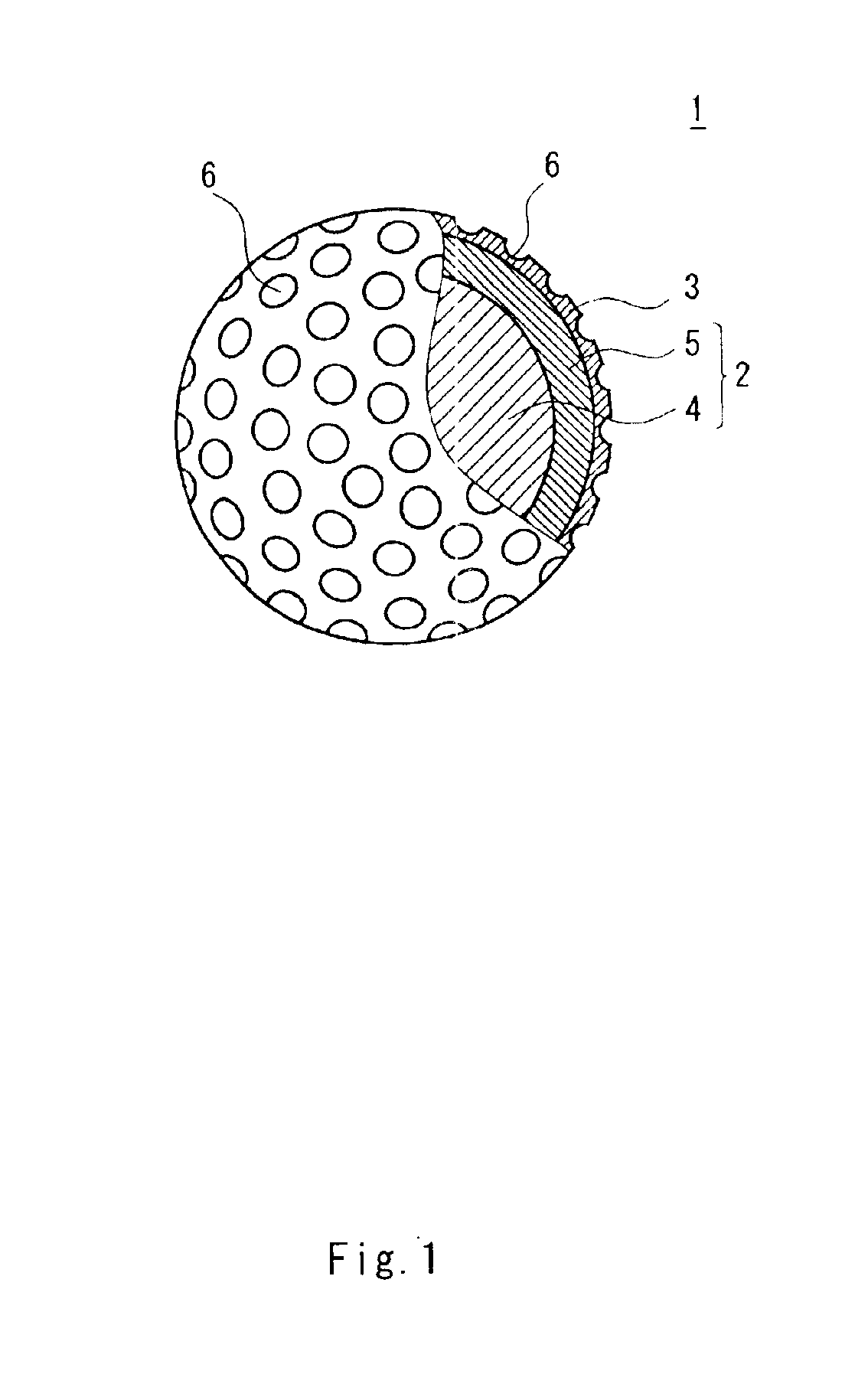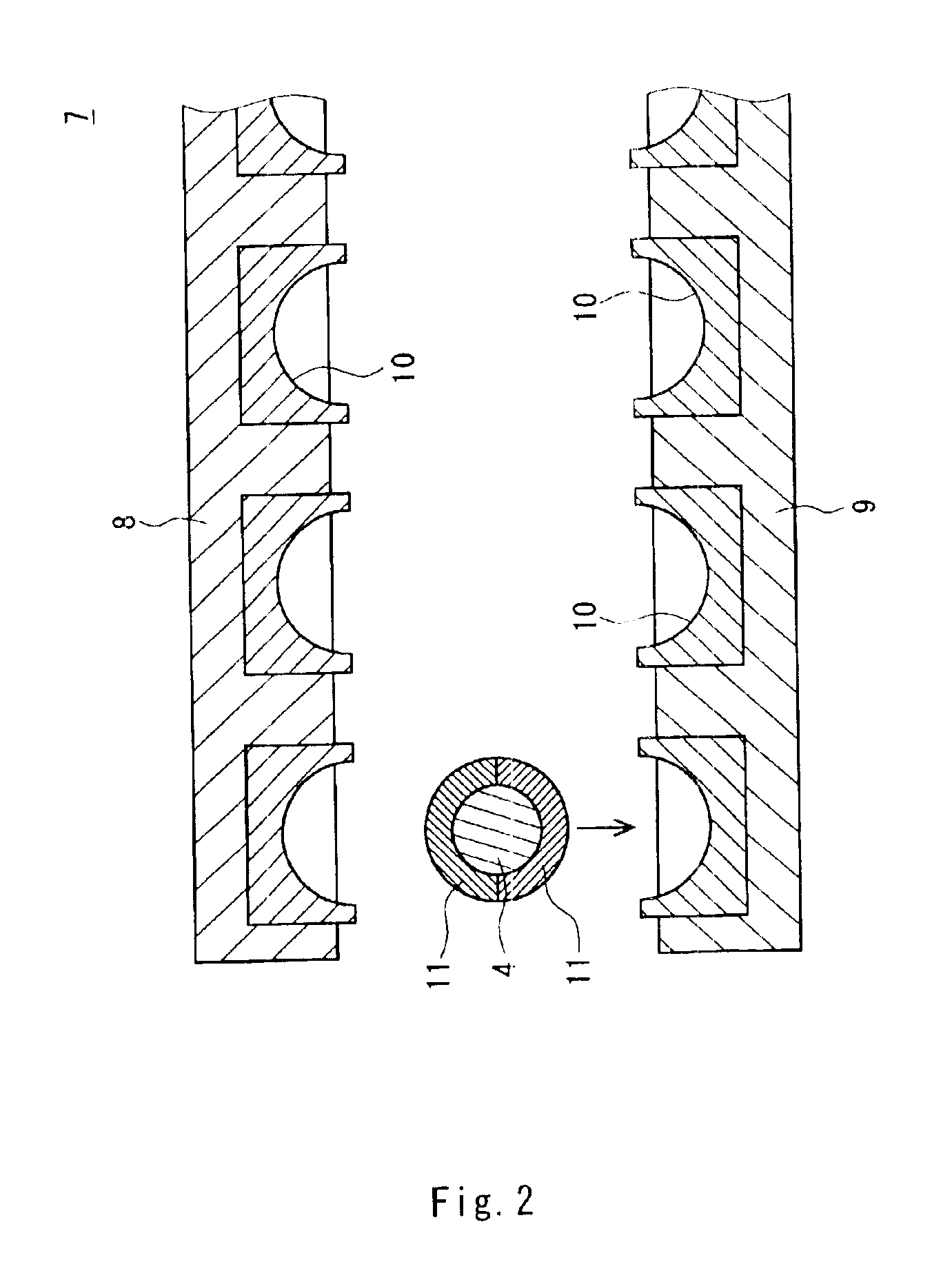Process for producing golf ball
a golf ball and production process technology, applied in the field of golf ball production process, can solve the problems of deterioration of working property, increase of production cost of golf ball, and process yield reduction, and achieve the effect of remarkable
- Summary
- Abstract
- Description
- Claims
- Application Information
AI Technical Summary
Benefits of technology
Problems solved by technology
Method used
Image
Examples
example 1
A rubber composition was obtained by kneading 100 parts of polybutadiene (“BR01”, trade name by JSR Corporation), 25 parts of zinc acrylate, 22 parts of zinc oxide and 1.0 part of dicumyl peroxide in an internal kneading machine. This rubber composition was placed in a mold having a spherical cavity, kept at 142° C. for 23 minutes and further kept at 168° C. for 6 minutes to obtain a center having a diameter of 30.2 mm.
Next, a rubber composition was obtained by kneading 80 parts of polybutadiene (“BR01”, trade name, supra), 20 parts of another polybutadiene (“BR10”, trade name, supra), 34 parts of zinc acrylate, 16.3 parts of zinc oxide and 1.0 part of dicumyl peroxide in an internal kneading machine. This rubber composition was placed into a mold and compressed to give a half shell. The center was covered with two of the half shells, and the center and the half shells were placed into a mold shown in FIG. 2. Thereafter, the lower portion was moved upwards at a moving velocity of 10...
examples 6 to 10
In a similar manner to Example 1 except that the space between the upper and lower portions upon initiation of the clamping step was altered as represented in Table 2 below, a core was formed.
example 11
In a similar manner to Example 1 except that the upper portion and the lower portion were brought into contact by moving the lower portion upwards at a moving velocity of 1.0 mm / s, from a state where the mold is unclamped utmost, a core was formed.
Evaluation of Working Property
Facility in removing operation of the molding flash was evaluated by an operator. A case where the molding flash was extremely ready to be removed, it was evaluated as “A”; a case where the molding flash was rather difficult to be removed, it was evaluated as ‘B’; and a case where the molding flash was difficult to be removed and thus long time period is required for the operation was evaluated as “C”. The results of evaluation are shown in Table 1 and Table 2 below.
Evaluation of Mass Deviation
Four positions for the measuring point equally spaced were selected along a seam on the surface of the mid layer, and further, additional positions for the measuring point were also selected which corresponded to bipolar...
PUM
| Property | Measurement | Unit |
|---|---|---|
| moving velocity | aaaaa | aaaaa |
| moving velocity | aaaaa | aaaaa |
| moving velocity | aaaaa | aaaaa |
Abstract
Description
Claims
Application Information
 Login to View More
Login to View More - R&D
- Intellectual Property
- Life Sciences
- Materials
- Tech Scout
- Unparalleled Data Quality
- Higher Quality Content
- 60% Fewer Hallucinations
Browse by: Latest US Patents, China's latest patents, Technical Efficacy Thesaurus, Application Domain, Technology Topic, Popular Technical Reports.
© 2025 PatSnap. All rights reserved.Legal|Privacy policy|Modern Slavery Act Transparency Statement|Sitemap|About US| Contact US: help@patsnap.com



